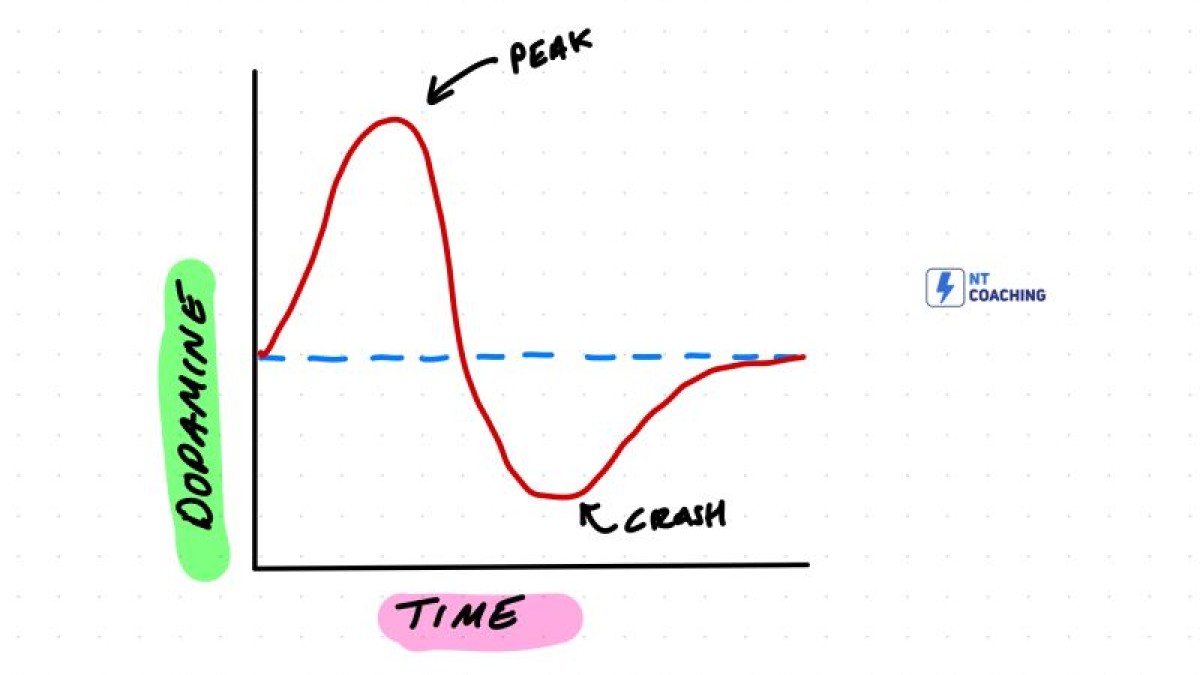The Dopamine Crash: Why Kids (and Adults) Fall Apart After a Fun, Exciting Experience

A quick, clear explanation of why kids melt down after fun events—it's not ingratitude, but a normal dopamine crash and emotional reset.
Have you ever planned something special—a birthday party, a family outing, a holiday event—only to have your child melt down, snap at everyone, or shut down as soon as it’s over?
It can feel confusing, frustrating, or even hurtful. You might find yourself thinking:
“I spent all this time planning something fun…why are they acting like this?”
“Did they even enjoy it?”
“Why does it always end in tears?”
But here’s the truth:
What you’re seeing isn’t ingratitude.
It’s not entitlement.
It’s not your child being “dramatic.”
It’s a dopamine crash—a perfectly normal neurochemical rebound, especially common in children (and adults) with ADHD or sensitive nervous systems.
Let’s break down what’s really happening.
What Is a Dopamine Crash?
Dopamine is the brain chemical that fuels motivation, excitement, anticipation, and pleasure. When your child is doing something fun or stimulating—like a birthday party, a playdate, a holiday gathering, or receiving a surprise—their dopamine rises fast and high.
For kids with ADHD, this spike can be even bigger because their brain is constantly seeking stimulation and novelty.
But when the fun stops, the dopamine drops just as quickly.
This drop is what we call a dopamine crash.
And it feels like:
-
sudden irritability
-
emotional overwhelm
-
tearfulness
-
crankiness
-
fatigue or shutting down
-
“I’m bored”
-
picking fights with siblings
-
being overly sensitive to small things
It’s not that your child didn’t have fun.
It’s that their brain is recalibrating.
What Parents Often Misread as Ingratitude
A dopamine crash can look, on the outside, like ungrateful behavior.
The child who just had the best day suddenly:
-
snaps at you
-
cries because you cut the sandwich wrong
-
says they want to go home right after arriving
-
lashes out at a sibling
-
says “this is the worst day ever”
It can feel personal.
But it’s not about the experience at all.
It’s the physiology of their nervous system going from 100 → 20 → slowly back to baseline.
Your child is not rejecting the experience—they’re overwhelmed by the comedown.
The Timeline: How Long Does a Dopamine Crash Last?
Understanding the timeline helps parents predict and support their children better.
1. Immediate Drop (0–30 minutes after the event ends)
You might see the first signs right as you leave the event or when the transition begins.
This is when overstimulation meets sudden downshift.
2. Crash Phase (30 minutes–2 hours)
This is the most intense part.
Expect big feelings, irritability, or shutdowns.
3. Recovery Phase (2–6 hours)
Mood stabilizes, but your child may still be sensitive or tired.
4. Full Reset (6–24 hours)
Most kids are back to baseline by bedtime or the next morning.
For big, high-stimulation days (holidays, vacations, birthdays), the “dopamine hangover” can linger mildly into the next day.
Why ADHD Makes Crashes More Pronounced
ADHD brains live in a world of dopamine dysregulation. They feel spikes intensely, and the drop afterward is sharper.
Kids with ADHD also struggle more with:
-
transitions
-
emotional regulation
-
sensory overload
-
social exhaustion
-
stopping an activity they’re hyperfocused on
-
unpredictable routines
All of these amplify the crash.
How to Support Your Child Through a Dopamine Crash
1. Build in a “Landing Zone”
After an exciting event, plan 10–30 minutes of:
-
quiet time
-
screen-free downtime
-
a snack and water
-
cuddle time or space alone
It helps the nervous system recalibrate.
2. Use Predictable Transitions
Give warnings about what’s coming next.
3. Meet needs proactively
Have food, water, and a calming activity ready.
Sometimes the crash is worsened by hunger or sensory depletion.
4. Lower expectations temporarily
This is not the time for:
-
chores
-
social demands
-
complex conversations
-
sharing toys
Their brain is offline for the moment.
5. Normalize it out loud
Say something like:
“Your brain had a really big, fun day. Sometimes after lots of excitement, our bodies feel tired or sad. You’re not doing anything wrong.”
Kids feel safer when their experience is named.
6. Resist taking it personally
Easier said than done, but remembering what’s happening in the brain helps parents stay steady instead of reacting.
For Parents (and Adults): You Feel This Too
This isn’t just a kid thing. Adults with ADHD often experience:
-
post-vacation blues
-
irritability after a social event
-
a slump after something exciting or meaningful
-
emotional drop-offs after a big work win
It’s the same dopamine curve—just expressed differently.
The Big Takeaway
When a child melts down after something fun, it doesn’t mean the experience wasn’t positive.
It means their nervous system is working hard to find its baseline again.
The event was wonderful.
The crash is normal.
And with understanding and supportive structure, kids learn how to recover smoothly and feel safe during the emotional dip.
Curious about ADHD for yourself or a loved one?
If you’re curious about ADHD — or if you want something concrete to share with others — I’ve created a free ADHD Screening Toolkit. It includes two evidence-based screening tools that break ADHD down into symptoms and everyday struggles.
Many people who see these tools have that “oh wow, that’s actually ADHD” moment. It’s a simple way to paint a clearer picture of what ADHD really looks like.
👉 Access the FREE ADHD Screening Toolkit here!
Want More Support Like This?
If you found this helpful, I send out occasional emails with more posts like this, upcoming workshops, and new resources for ADHDers, self-healers, and helpers.
👉 Join the email list here to stay in the loop.
 Lindsey Peterson
Lindsey Peterson 